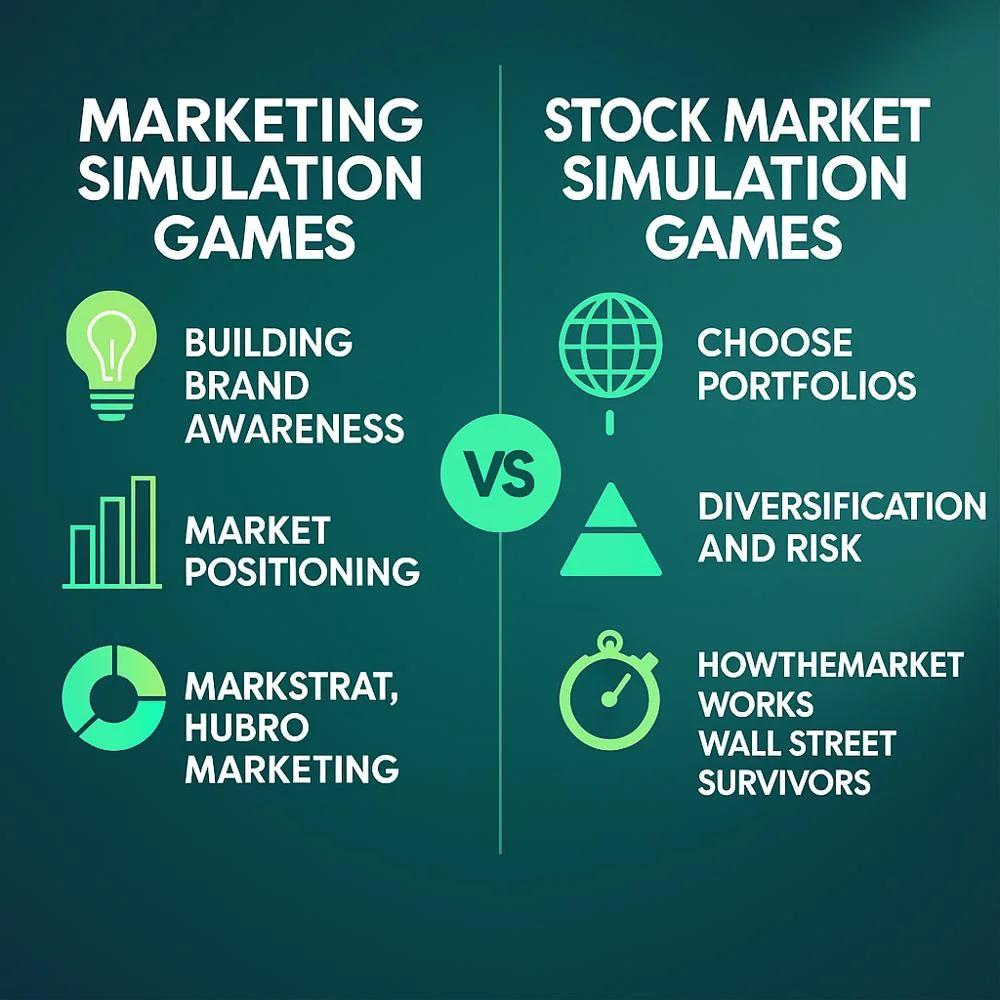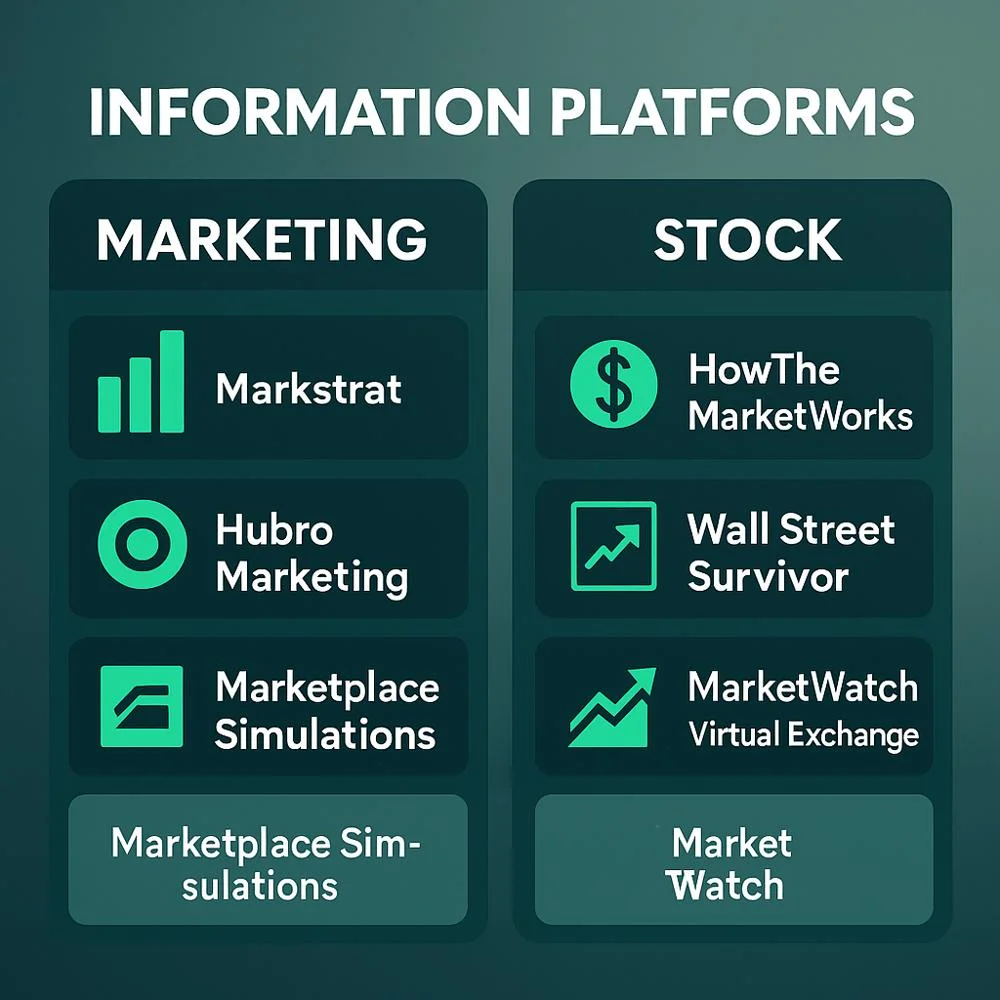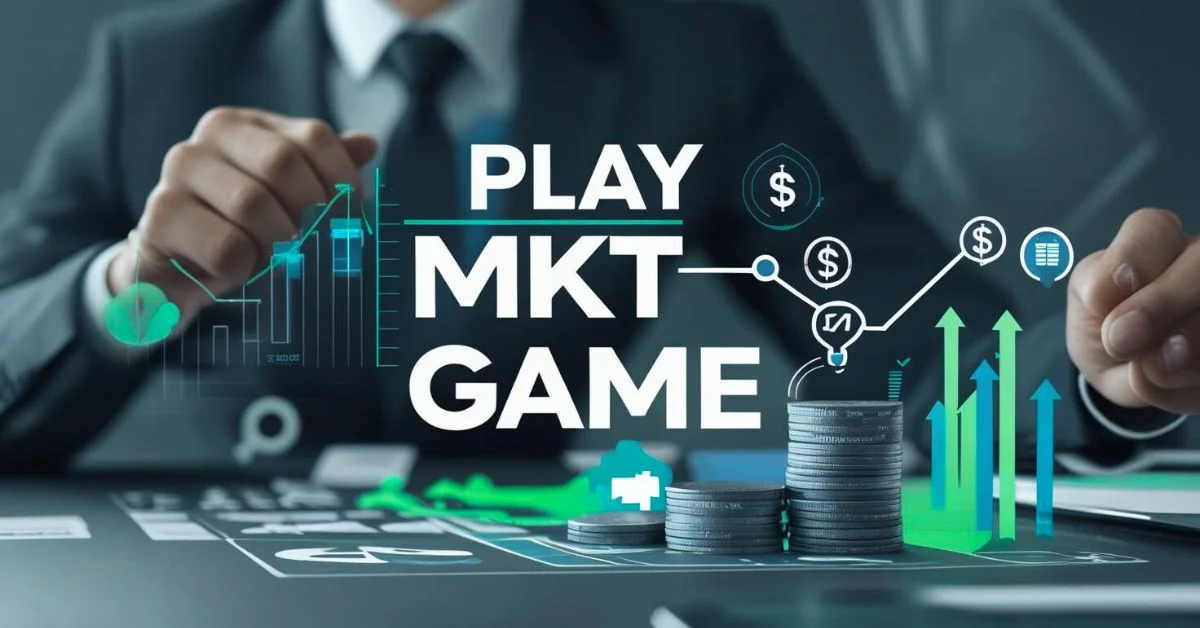If you’re new to the term MKT game, you’ve come to the right place. An MKT game is short for a market or marketing simulation game where you make virtual decisions, like setting prices, running ads, managing production and then observe what happens. It’s a safe and fun way to practice strategy and marketing skills without risking real money.
What Is an MKT Game?
An MKT game puts you in charge of managing a virtual business, where your decisions directly shape outcomes. Over several rounds or stages, you decide on product pricing, advertising budgets, distribution and more. After each round, you get feedback profit numbers, market share reports, customer reactions to help refine your next moves.

There are two main types of MKT games:
- Marketing simulation games: These focus on building brand awareness and market positioning games like Markstrat or Hubro Marketing fall into this category.
- Stock-market simulation games: These mimic real-world investing, helping you learn about portfolios, diversification, and risk think platforms like HowTheMarketWorks or Wall Street Survivor.
This guide will walk you through the basics that apply to both kinds of games.
Why Play an MKT Game?
Playing an MKT game offers several benefits:
- Hands-on learning: You apply marketing or investing knowledge in realistic scenarios.
- Risk-free experimentation: It’s virtual money, so you can learn from mistakes without real losses.
- Skill building: You develop time management, strategy, budgeting and analytical thinking.
- Friendly competition: Many platforms allow you to compare your performance with others, making learning more motivating.
Steps to Play an MKT Game
These steps outline the practical process of playing a marketing simulation game from selecting a platform to making decisions and analyzing outcomes. Each step is designed to guide you through the actual gameplay, helping you learn marketing concepts while applying them in real-time scenarios. Follow them to gain hands-on experience and improve your strategic thinking with every round.
Step 1: Pick Your Platform
First, decide which type of simulation interests you most.

For marketing simulations
- Markstrat: Known for managing multiple products across markets.
- Hubro Marketing: A good starter platform for concepts like pricing and targeting.
- Marketplace Simulations: Suitable for in depth market decision exercises.
For stock-market simulations
- HowTheMarketWorks: Beginner-friendly and widely used in classrooms.
- Wall Street Survivor: Helps beginners learn investing by letting them practice trades while following structured lessons.
- Simulators like MarketWatch’s Virtual Exchange, eToro’s demo mode and TradingView’s test environment provide powerful tools and access to trader communities for deeper learning.
Select the platform that matches what you want to learn and how you prefer to learn it.
Step 2: Register and Start
Once you pick a platform:
- Sign up with a free account using your email.
- Choose a session type: individual or team-based, beginner or advanced, real-time or turn-based.
- Receive your virtual resources: this could be money to invest or products to manage.
Step 3: Familiarize Yourself with the Interface
Before diving in, spend time understanding the platform layout. Common sections include:
- Market reports: Insights into segment sizes, competitor performance and trends.
- Decision panels: Where you input choices like price, ad budget and production.
- Results dashboard: Shows outcomes from each round profit, share and other key metrics.
- Help sections: Look for tutorials, guides, or videos explaining how to navigate.
Reading the basic guides first will help you understand the system and make better choices during gameplay.
Step 4: Play Your First Round
Carefully plan your first moves:
For marketing games
- Set your product’s price.
- Define your target market and customer segment.
- Allocate your advertising budget across channels.
- Plan production volume and sales distribution.
For stock-market games
- Choose your investments stocks, ETFs, bonds or other instruments.
- Determine how much to allocate to each purchase.
- Use tools like stop-loss, limit orders and alerts if available.
Always double-check to ensure your choices match your strategy and budget goals.
Step 5: Analyze the Results
After submitting your choices, review performance metrics:
- Marketing games report on revenue, market share, brand strength and ROI.
- Stock games highlight portfolio growth, individual stock performance and financial ratios like P/E.
Study the performance graphs and reports carefully to figure out what’s working and adjust your strategy accordingly.
Step 6: Refine and Adjust
Treat every round like a learning cycle:
- Plan: Define your targets (e.g., growth, profitability, brand reach).
- Execute: Make your strategic choices.
- Evaluate: Compare results with competitors or benchmarks.
- Adapt: Change course based on data adjust pricing, ads, investments or production.
Marketing scenarios typically run 6–10 rounds; stock simulations may span weeks or months.
Step 7: Apply Smart Strategies
Some proven tips:
- Avoid placing all your virtual funds into one area, spread them out to reduce risks and improve your game performance.
- Balance pricing and quality: Too-cheap prices may cut into profits.
- Test ads before scaling: Small campaigns help confirm what works.
- Track competitors: Use published reports to stay competitive.
- Stay objective: Avoid emotional decisions based on short-term changes.
Step 8: Compete and Collaborate
Make it more engaging:
- Engage in group or classroom challenges.
- Join public leaderboards or competitions.
- Team up with friends or classmates in group scenarios.
Interaction builds motivation and a sense of community.
Step 9: Reflect on Your Journey
Complete your session by:
- Analyzing what worked well and what didn’t.
- Summarize your approach and performance by creating a brief report reflecting on the strategy you followed and the outcomes you achieved.
- Identifying lessons learned these insights are valuable for real-world application.
Step 10: Continue Learning
To keep improving:
- Explore platform tutorials or built-in courses.
- Watch relevant YouTube videos for walk-throughs.
- Join forums to discuss tactics and ideas with others.
Building your knowledge over time helps you perform better in future games.
Quick Reference
Step 1: Pick Your Game
Start by choosing the type of MKT game you want to play. Decide whether you’re more interested in marketing simulations or virtual stock trading.
Step 2: Register and Begin
Create a free account on your chosen platform and set up your first session. You’ll usually be given some virtual money or business assets to start with.
Step 3: Get Familiar with the Interface
Before taking action, take time to explore the game’s dashboard. Learn where to find reports, input decisions and view your performance.
Step 4: Make Your First Decisions
Begin your gameplay by entering your strategy choices. This could include setting prices, investing in ads or buying stocks depending on the type of game.
Step 5: Review Your Results
After submitting your decisions, carefully go over the outcomes. Check how your strategy performed and what areas need improvement.
Step 6: Review and Enhance
Use your previous round’s results to make smarter choices and improve your tactics moving forward. Change prices, shift your marketing focus or rebalance your portfolio as needed.
Step 7: Apply Smart Tips
Use proven tactics to stay competitive. Diversify your decisions, keep an eye on competitors and make data-driven choices.
Step 8: Engage with Others
Join competitions, work in teams, or compare your results with other players. This adds a fun and motivating aspect to your learning.
Step 9: Reflect on Your Experience
At the end of the game, look back at what worked and what didn’t. Identify lessons that can help in future rounds or even in real business situations.
Step 10: Keep Learning and Practicing
Continue improving by exploring more games, watching tutorials or joining forums where players share tips and strategies.
Final Thoughts
An MKT game is an excellent way to practice marketing or investment decisions in a risk-free, engaging environment. By following this step-by-step guide, beginners can confidently pick a platform, manage virtual assets and fine-tune strategies round by round. As you play more, you’ll gain confidence, develop sharper skills and be ready to bring those skills into real-world projects or portfolios.



